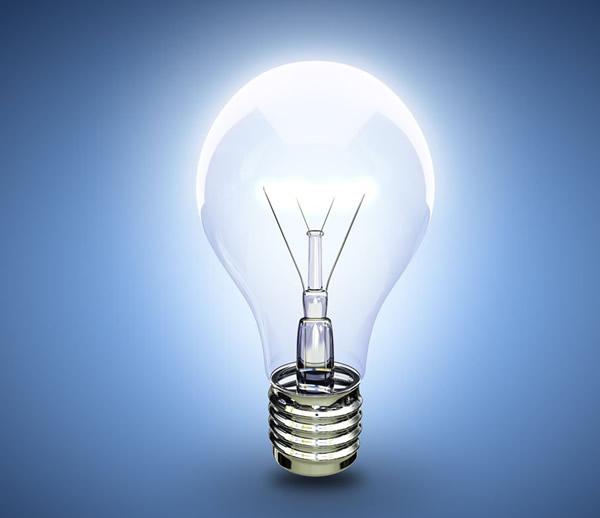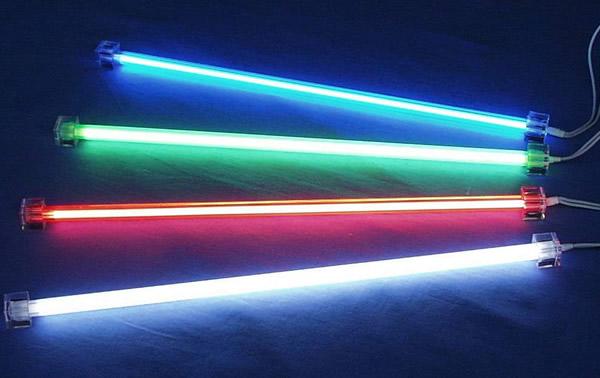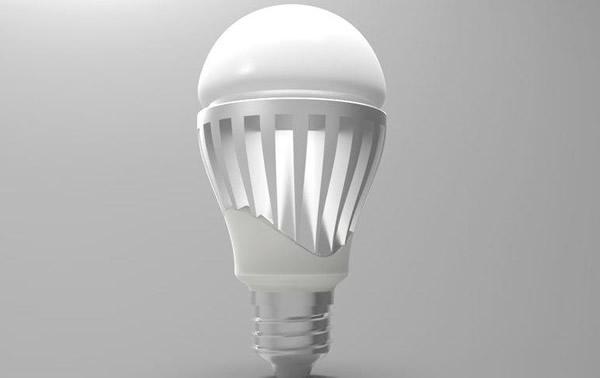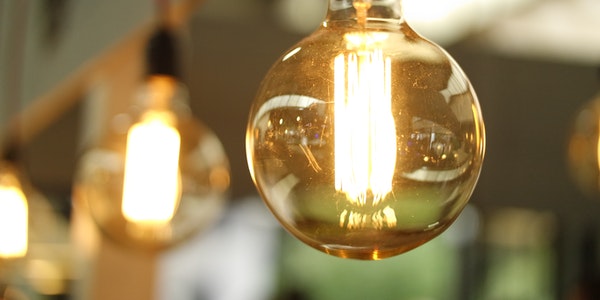Comparison of Usage Cost
LED is a light-emitting device that can directly convert electrical energy into visible light. It has a series of excellent characteristics such as low working voltage, low power consumption, high luminous efficiency, pure light and color, stable and reliable performance, and does not contain ultraviolet and infrared rays. As a new generation of high-tech light sources, it is gradually replacing traditional high-energy-consuming incandescent lamps, halogen lamps, etc. This will be another industrial revolution in the history of energy-saving technology-the lighting revolution.
The cost comparison between LED ceiling lamps and traditional halogen lamps and energy-saving lamps:
| Item | Traditional halogen lamp cup 50W (with transformer) | Energy-saving downlight | Metal halide lamp | LED ceiling light |
| Purchase cost ($) | 100 | 80 | 200 | 300 |
| Power consumption (W) | 50 | 30 | 75 | 15 |
| Monthly power consumption (kWh) | 18 | 10.8 | 27 | 5.4 |
| 5-year electricity bill ($0.20/kWh) | 169.00 | 101.25 | 253.00 | 50.63 |
| 5-year lamp replacement cost($) | 400.00 | 320.00 | 800.00 | 0 |
| Cost of fixtures for 5 years ($) | 1200.00 | 800.00 | 1500.00 | 100.00 |
| 5 years maintenance cost ($) | 250.00 | 400.00 | 400.00 | 0 |
| Total cost of 5 years of use ($) | 3030.00 | 2248.00 | 4520.00 | 739.00 |
LED Commercial Lighting Products Have Obvious Advantages
LED commercial lighting refers to lamps that use LEDs as light sources and can be used in commercial places while embodying the characteristics of LED light sources, and can meet the lighting requirements of commercial places. It is generally suitable for places with special requirements for energy saving and lighting in stores.
In terms of scope of use, LED commercial lighting can be divided into LED accent lighting and LED basic lighting. Among them, LED spotlights and LED ceiling lights are accent lighting, and LED high bay lights and LED flood lights are basic lighting.
From a technical perspective, LEDs have obvious advantages when used in commercial lighting. These advantages include energy saving, long life, instant start, high color rendering and so on. Traditional lamps used in commercial lighting include incandescent lamps, tungsten halogen lamps, fluorescent lamps, energy-saving lamps and metal halide lamps. In addition to environmental protection and long life, LED lamps can also replace incandescent lamps and halogen tungsten lamps. The energy saving ratio is as high as 90%, and the life span is 50 times that of these traditional lamps.
Advantages of LED Commercial Lighting
Compared with traditional commercial lighting, LED commercial lighting has five major advantages:
- Energy saving
LED commercial lighting is generally only 1 to 10W. When the brightness is similar, the power consumption is not much.
- Environmental protection
LED is a recyclable light source, and energy-saving lamps, halogen lamps, etc. all contain metal elements (such as mercury) that pollute the environment. Recycling has become a major problem.
- Security
LED light source does not generate high heat,
- Long life
In theory, the LED light attenuation can be reduced to 70% of the nominal life of 100,000 hours, which reduces the frequency of replacement and other maintenance work.
- High light efficiency
There are many color changes. 1W LED lamps can generally reach 90-100 lumens, which is equivalent to 5-6 times the light efficiency of general light sources.
Types and Characteristics of Lighting Sources
According to the division of light sources, there are four common lamps in daily life: incandescent lamp, energy-saving lamp, metal halide lamp and LED lamp (light emitting diode). These lamps have their own advantages and disadvantages in use. It is necessary to fully understand the performance of various lamps.
Incandescent Light
The biggest disadvantage of incandescent lamp is its short service life. The lifespan is generally between 3,000 and 4,000 hours, and some incandescent lamps with poor quality can only be used for 1,500 hours. Incandescent lamps are often used in restaurants, bedrooms and other spaces at home. They look more comfortable in color.
Advantages: small light source and many kinds of lampshade forms. The utility model has the advantages of large universality, many color varieties, orientation, scattering, diffusion and other forms, and can be used to strengthen the three-dimensional sense of objects. The color of incandescent lamp is closest to the color of sunlight.
Disadvantages: not environmentally friendly. When using incandescent lamps, 95% of the electric energy is consumed in heating, and only 5% of the electric energy is really converted into visible light.
High heating temperature, fast filament transpiration and short service life (1000 hours). High infrared component and easy to be affected by vibration. Low color temperature, yellow.
Scope of application: home, restaurant, bedroom
Fluorescent Light
Advantages: energy saving. About 60% of the electric energy consumed by fluorescent lamps can be converted into ultraviolet light, and other energy can be converted into heat energy. Generally, the conversion efficiency of ultraviolet light to visible light is about 40%. Therefore, the efficiency of fluorescent lamps is about 60% × 40% = 24% – approximately twice that of a tungsten lamp with the same power.
Disadvantages: it will cause light decay, and the color rendering of fluorescent lamps is not as good as that of incandescent lamps. The light flickers, which has a certain impact on vision. In addition, there is mercury pollution during production and after use.
Scope of application: factory, office, school, supermarket, hospital, warehouse and other indoor public spaces.
Energy Saving Light
Energy saving lamps are popular because of energy saving. A 9-watt energy-saving lamp is equivalent to a 40 watt incandescent lamp. The lifespan of energy-saving lamps is also relatively long, generally 8,000 to 10,000 hours. After using the energy-saving lamp for a period of time, the lamp will darken, mainly because of the loss of phosphor, which is technically called light attenuation. Some high-quality energy-saving lamps have invented constant lighting technology, which can keep the lamp tube in the best working state for a long time. After 2000 hours of use, the light attenuation is less than 10%.
Advantages: high luminous efficiency, more than 5 times that of ordinary incandescent lamps, and obvious energy saving effect.
Long life span, about 8 times that of ordinary bulbs. And it is small in size and easy to use.
Disadvantages: light decay will occur. The color rendering is low, and the color rendering of incandescent lamps and halogen lamps is 100, which is perfect. The color rendering of energy-saving lamps is mostly between 80 and 90. Light sources with low color rendering not only fail to render colors perfectly, but are also harmful to health and vision.
Scope of application: traffic lighting, indoor lighting, landscape lighting
LED Light
The scientific name of this kind of lamp is light-emitting diode, which is a new technology. The white LED lights on the market now have better performance, but the current LED lights still need to be improved technically.
Advantages: LED lights have many advantages such as small size, low power consumption, long life, non-toxic and environmentally friendly. It was originally used in outdoor decoration and engineering lighting, and now it has gradually developed into home lighting.
Disadvantages: expensive, need constant current drive. If the heat dissipation is not handled well, it is easy to cause light attenuation. The light efficiency is relatively low. The color will be missing. In the seven bands of red, orange, yellow, green, blue, blue and purple, the blue and green bands of LED lights are relatively few, so there will be missing when displaying the color of things.
Scope of application: traffic lighting, indoor lighting, landscape lighting, stadium lighting, airport lighting, factory lighting, warehouse lighting and special environment lighting, etc.
Lamp Purchase Tips
Lamp is a more personalized electrical appliance. As long as you like, there is basically no law of choice. However, now many people choose professional designers for home decoration design. After completion, it is best to choose the type of lamps and light sources according to the designer’s requirements. This can be better consistent with the home decoration style. After all, designers are professionals.
■When choosing the light source of the lamp, pay attention to people’s psychological feelings, and don’t choose too much white light. Using some soft warm white light will make people feel comfortable staying at home. The color temperature should be uniform.
■ Many people use lamp slots in decoration. In fact, some families will not use it for a long time after they move in. Don’t “follow suit” decoration, but consider the actual needs.
■ in the selection of lamps, do not try to be cheap. No matter how small the lamp is, it is also an electrical appliance. In addition to greatly reducing the performance, the lamp with poor quality also has hidden dangers in safety.
■ in order to save energy better, the lamps should be distinguished by function: general lighting and accent lighting. The general lighting can adopt the general illumination. For art, porch and other spaces, we should use key lighting, which will be more reasonable in functionality. Turn on the lamps in the space you use. In addition to energy saving, it can also add a sense of indoor space change.


